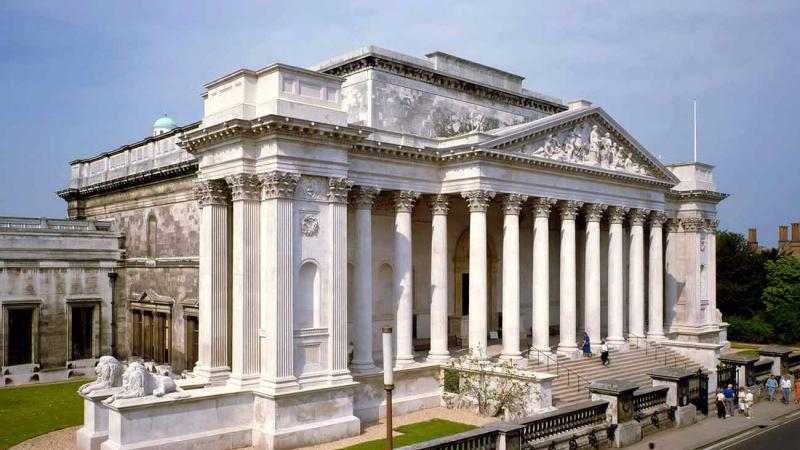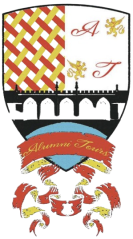Visit the Best Museums in Cambridge

Museums
There are eight free University of Cambridge Museums, as well as four independent museums.
Fitzwilliam Museum (Trumpington Street): Cambridge’s most famous museum, started in 1816 when Richard Fitzwilliam, 7th Viscount Fitzwilliam of Merrion bequeathed his art and library to the university. Now welcoming some 400,000 visitors each year, it has a fabulous collection of archaeological remains (including a Roman Swiss army knife, a wonderfully colourful, 3000 year old Nespawershefyt coffin from Egypt and Assyrian winged figures from Nimrud) and a great art collection (look out for Monet ‘Springtime’, Renoir ‘Gust of Wind’, Titian ‘Tarquin and Lucretia’, Pieter Brueghel the Younger ‘Triumph of Death’, Rubens ‘Death of Hippolytus’ and El Greco ‘St John the Evangelist’). A curiosity is a decimal clock, made in 1793 in France when they decimalised the system including clocks, splitting the day into 10 decimal hours of 100 decimal minutes each. It also runs free lunch-time recitals on Wednesdays and Sundays – just turn up early enough to get a token before they run out.
Sedgwick Museum (Downing Street): This museum of Earth Sciences dates from 1728, making it the oldest museum in the city. The entrance greets you with an Iguanodon, one of the first reptiles to be given the name of dinosaur, and now thought to have roamed on four legs, and there are a number of ichthyosaur skeletons bought by Adam Sedgwick from the great dinosaur discoverer, Mary Anning. Local finds include prehistoric bones found at nearby Barnwell (ice age, 10,000 years ago), Burwell (ice age, 25,000 years ago) and Barrington (125,000 years ago, interglacial), such as the extinct Megaloceros (giant deer), woolly rhino and mammoth, and still living reindeer and horse. This museum is also the best place in Cambridge to find out about Charles Darwin, with many rocks and fossils collected on his trip on HMS Beagle.
Museum of Archaeology and Anthropology (Downing Street): First opened in 1884 from the collections of the Cambridge Antiquarian Society which had begun in 1839. The local finds include the Arbury Coffin containing a 4th century Roman woman with a slightly gnawed foot, and the Trumpington Cross, an early Christian brooch with gold and garnets found in an Anglo-Saxon burial. On the international side, the somewhat eclectic collection includes items from Captain Cook’s voyages, a Maori flagpole, Benin City metalwork, bronzes from Shang dynasty China and some fine pieces from predynastic Egypt.
Museum of Zoology (Downing Street): In 1877 the Museum of Comparative Anatomy and the Cambridge Philosophical Society (itself founded in 1819 by geologist Adam Sedgwick and botanist John Stevens Henslow) came together to form a new museum, located in the New Museums Site. Now the site hosts the brand new David Attenborough building dominated by an enormous fin whale, discovered in Pevensey Bay in 1865, which took four weeks to be re-hung following the refurbishment. Other highlights include one of the most complete skeletons of a dodo, the rarely seen goblin shark which lives 1300m below sea level, a Komodo dragon, a cassowary bird (a colourful reminder that birds were not just descendants of the dinosaurs, but are in fact dinosaurs), and Charles Darwin’s beetle box (displaying the collection he amassed while at Christ’s College).
Whipple Museum of the History of Science (Free School Lane): Founded in 1944, when Robert Whipple presented his scientific instruments to the University, this museum includes the Herschel Telescope (made by William Herschel, who discovered Uranus in 1781), Charles Darwin’s achromatic microscope, and Napier’s Logs.
Polar Museum (Lensfield Road): Part of the Scott Polar Research Institute, set up in 1920 to commemorate Scott’s ill-fated expedition to the South Pole. It has wide-ranging displays on the polar regions including Scott relics (his last letters, a folding camera and Oates’s sleeping bag), Shackleton’s expeditions, and the search for the Northwest Passage.
Museum of Classical Archaeology (Sidgwick Avenue): A sculpture collection with one of the largest plaster cast collections in the world: over 600 casts of Greek and Roman sculptures, including friezes from Olympia and Delphi. The Peplos Kore was discovered at the Acropolis in the 19th century with some paint still intact . The museum’s copy is fully repainted to how it might have looked, and it is now realised that whilst we may think the white marble of ancient remains is beautiful, it is probable that most of the statues and temples were coloured.
Kettle’s Yard (Castle Street): Four cottages that Jim Ede (a former curator of the Tate Modern) converted to house his collection of early 20th century avant-garde art, once described as the Louvre of the pebble. It is very popular both for its contemporary art and café. The tiny 11th-century gem of St Peter’s Church stands in its grounds.
Museum of Cambridge (Castle Street, next to Kettle’s Yard): The city’s oldest commercial building, the White Horse Inn, now showcases a collection of artefacts and stories from the last 400 years. The inn would have been a major stop on the road north out of the city, and is now the only place to find out about the history of the city and the surrounding Fens.
Cambridge Museum of Technology (Cheddars Lane): This museum is housed in the old pumping station by the river, which was built in an attempt to solve the problem of sewage in the 1850s, when typhoid and cholera were rife. It covers the industrial heritage of the city, with steam engines, and displays of printing.
Centre for Computing History (Coldhams Road): Cambridge and its spin-out companies have had a large impact on computing, and this museum tells the history and social impact of personal computing. It is an essential stop for anyone wishing to revisit their 1980s’ computer game-playing days!
David Parr House (Gwydir Street): The ordinary terraced houses in Gwydir Street include what is rapidly becoming one of the city’s trendiest and expensive destinations – an Arts and Crafts worker’s home, only opened to the public in 2014. David Parr was a working-class labourer paid to decorate grand buildings, who also decorated his own home with fabulous William Morris designs. Across the street is another local hotspot, the Hot Numbers café.
– Christopher Jagger ‘King’s College, Alumni’
